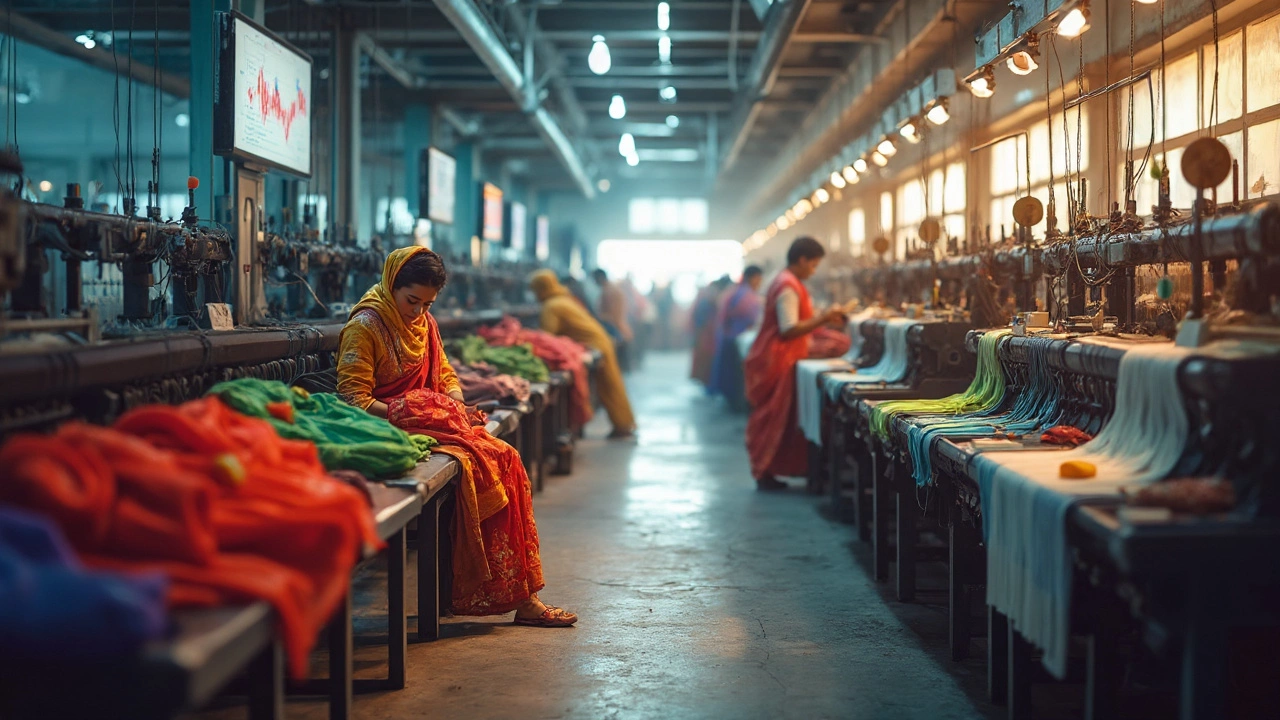Textile Business in India
When talking about textile business in India, the sector that designs, produces, and sells fabrics and finished garments across the country. Also known as Indian textile sector, it fuels millions of jobs, drives exports, and shapes fashion trends worldwide.
The Indian textile industry, a network of mills, small workshops, and high‑tech factories forms the backbone of the business. It covers everything from cotton spinning to synthetic weaving, and its scale rivals any global competitor. Because of this breadth, the industry requires tight supply‑chain coordination, skilled labor, and constant innovation to stay ahead.
Key Players and Market Dynamics
Among the giants, Arvind Limited, India's largest cotton‑based textile manufacturer stands out with billions in revenue, a wide product portfolio, and aggressive sustainability targets. Close behind, Reliance Industries leverages its petrochemical base to dominate polyester and blended fabrics. These firms not only set price benchmarks but also invest heavily in automation, which pushes margins higher.
Beyond the headlines, thousands of family‑run units add flexibility and niche expertise. They specialize in handloom, denim, or technical textiles, feeding both domestic retailers and export orders. This mix of megacorporations and SMEs creates a resilient ecosystem that can weather raw‑material price swings and global demand shifts.
Export figures illustrate the sector’s global impact: in the last fiscal year, Indian textiles earned over $40 billion, making the country the second‑largest apparel exporter. The United States, European Union, and Middle East remain top destinations, while emerging markets in Africa and Latin America show rapid growth. This export strength feeds back into domestic capacity, encouraging capacity expansion and product diversification.
Technology drives the next wave of growth. Digital design tools, AI‑enabled quality control, and smart factories reduce waste and improve turnaround times. Companies that adopt these innovations report up to a 15 % boost in productivity. Meanwhile, sustainability standards—like water‑less dyeing and recycled fibers—are becoming mandatory for many overseas buyers, pushing Indian firms to upgrade processes.
Financing and policy also shape the landscape. The Government’s “Textiles Vision 2025” plan promises tax incentives, interest‑subsidized loans, and export‑linked credit lines. These measures aim to lift the sector’s contribution to GDP from roughly 2 % today to over 5 % within a decade. For entrepreneurs, this means easier access to capital and a clearer roadmap for scaling operations.
From a consumer angle, changing preferences matter. Urban shoppers now favor fast fashion, sustainable fabrics, and customization. This demand fuels a surge in garment‑on‑demand platforms and small‑batch production runs. Businesses that can quickly translate a runway trend into a stocked SKU gain a competitive edge.
All these threads—big players, tech adoption, policy support, and consumer shifts—intertwine to define the current state of the textile business in India. Below you’ll find articles that drill down into each of these aspects, from deep‑dive profiles of market leaders to practical guides on starting a small‑scale textile venture. Explore the collection to see how the industry is evolving and where you can tap into its next growth chapter.
